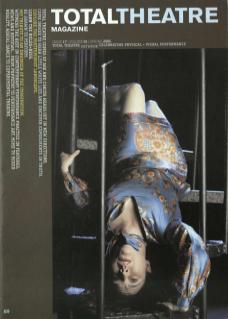Schlock!'s programme and publicity promised an investigation of the erotics of violence explored through the aesthetics of mediatised horror: a challengingly cerebral starting point. Forming the work's organising principle, this perspective of cultural critique demanded an intimidatingly unwieldy theatrical dramaturgy. However, viewed on a straightforwardly performative level, the expertly handled friction between 'real' and fictionalised violence formed the basis for a rich and provocative piece of work.
Schlock's material was drawn from a wide palette of b-rate horror films and first-hand accounts of experiences of violence ranging from friends of the cast to Ted Bundy. This was realised and related through a number of meta-theatrical devices: a surgical clear plastic screen dividing audience from much of the staged activity; the performed direction of characters into faked horrific poses; the separation of live and recorded voice; and the recurrent technique of breaking dramatically violent sequences at their peak. Transparent theatrical fakery was juxtaposed with movingly performed reality and further with an emphasis on live physical presence through direct address and bodily foregrounding of the performers including nudity, retching and the use of physical soundscape mixed live from a mobile medical cart.
There were certainly ideas which didn't work: confronting the audience with predictions of death; images of vampirism which seemed too overtly fictional; and the requirement for their argument to collapse accounts from victims and infamous perpetrators which seemed at times insensitive to their material. Yet overall this was a thrilling and disconcerting performance to watch: both visceral and cerebral, allowing the audience to experience the fault-lines between experienced and performed violence.

